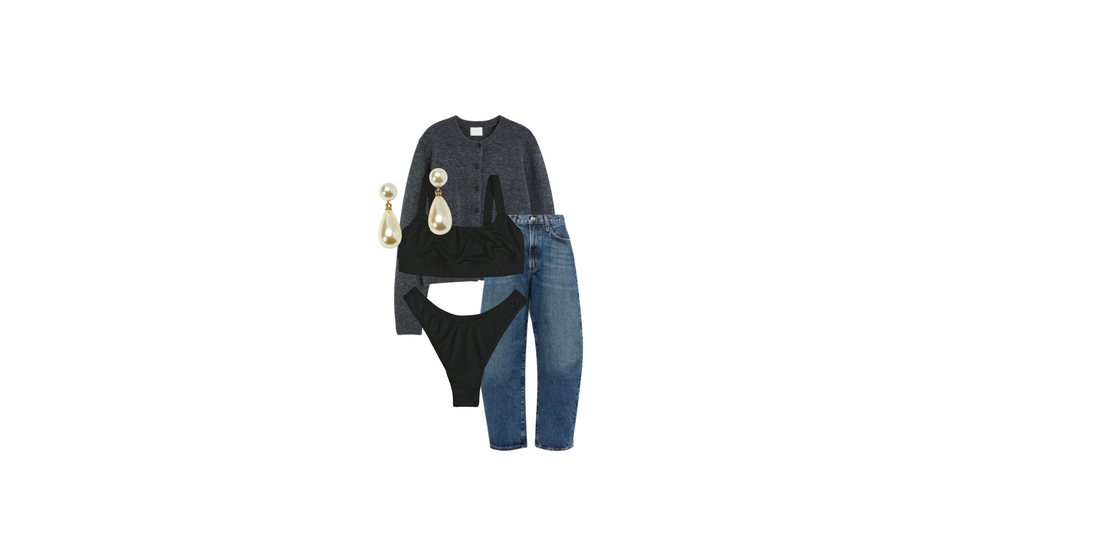
5 STEPS TO A MORE SUSTAINABLE WARDROBE
Share
Creating a sustainable wardrobe is about making mindful choices that reduce our environmental footprint, promote ethical practices, and help keep clothing in circulation for longer. While fast fashion continues to dominate the market, there are steps we can all take to make more responsible and sustainable choices. Here are five simple steps to help you build a more eco-friendly wardrobe.
1. REPAIR WHAT YOU ALREADY OWN
The first step towards a more sustainable wardrobe is to repair items that need fixing. Whether it’s sewing up a small tear, replacing a button, or fixing a broken zipper, making simple repairs can extend the life of your clothing. Instead of tossing out damaged pieces, take the time to mend them. Not only will this reduce waste, but it also saves you money in the long run.
If you're not sure how to repair something, there are plenty of online tutorials and resources to help. Alternatively, local tailors or repair shops can help bring your beloved pieces back to life. It’s amazing how much longer a piece of clothing can last with just a little care and attention.
2. BORROW CLOTHES FOR SPECIAL OCCASIONS
Instead of buying something new for a one-time event, consider borrowing clothes from friends, family, or clothing rental services. Whether it's for a wedding, a night out, or a big celebration, borrowing ensures you're not contributing to the demand for new clothing that will only be worn once. Many cities now have clothing rental shops that offer everything from dresses to formal suits, giving you access to high-quality fashion without the environmental impact.
By borrowing, you can experiment with styles you might not buy yourself, and still enjoy a fresh look without the waste. It’s a win-win for both your wardrobe and the planet!
3. SHOP USED AND VINTAGE
Shopping second-hand is one of the most effective ways to make your wardrobe more sustainable. When you buy used clothing, you're giving pre-loved items a second life, which reduces the demand for new garments and the resources needed to produce them. Thrift stores, vintage shops, and online marketplaces are full of great deals on gently used clothing.
Vintage and second-hand shopping can also help you find unique, high-quality pieces that might not be available in regular stores. The best part? You can feel good knowing that you're extending the life of the garment.
4. SUPPORT SUSTAINABLE BRANDS
When shopping for new clothing, choose brands that prioritize sustainability and transparency. Many companies are now committing to more ethical and eco-friendly practices, such as using organic materials, reducing water waste, and ensuring fair labor practices. However, transparency in how a brand operates is just as important. Brands that openly share information about their supply chains, production processes, and environmental impact allow consumers to make informed decisions. Supporting these transparent and responsible brands helps create a demand for more sustainable options and encourages other companies to adopt better practices.
Look for certifications such as OEKO-TEX Standard 100, Global Organic Textile Standard (GOTS), or B Corp, which indicate that a brand is committed to sustainability and ethical production. Transparency from these brands often extends beyond certifications, with many offering detailed reports on their environmental and social impacts. Though sustainable clothing can sometimes come with a higher price tag, it often represents a better value in the long term because of its higher quality, durability, and positive impact on both people and the planet.
5. EMBRACE A CAPSULE WARDROBE
Building a capsule wardrobe is a powerful way to streamline your closet and reduce unnecessary purchases. A capsule wardrobe is a collection of versatile, timeless pieces that you can mix and match to create multiple outfits. It focuses on quality over quantity, encouraging you to invest in a few carefully chosen pieces that suit your style and needs.
By embracing a capsule wardrobe, you’ll be less tempted by trends and impulse buys, leading to fewer purchases and less waste. It’s about focusing on what you truly need and building a closet full of pieces that work well together and stand the test of time.
By incorporating these five steps into your fashion choices, you can create a more sustainable and ethical wardrobe. It’s not about perfection – it’s about making conscious decisions and shifting your mindset toward long-term, thoughtful fashion choices. Every small change counts, and together, these actions can make a significant difference for the planet and the future of fashion.
